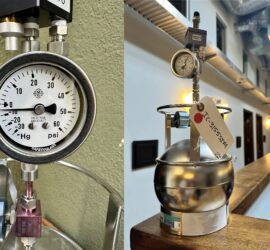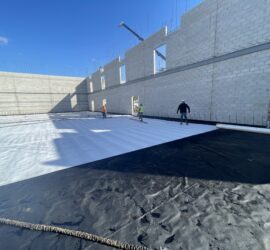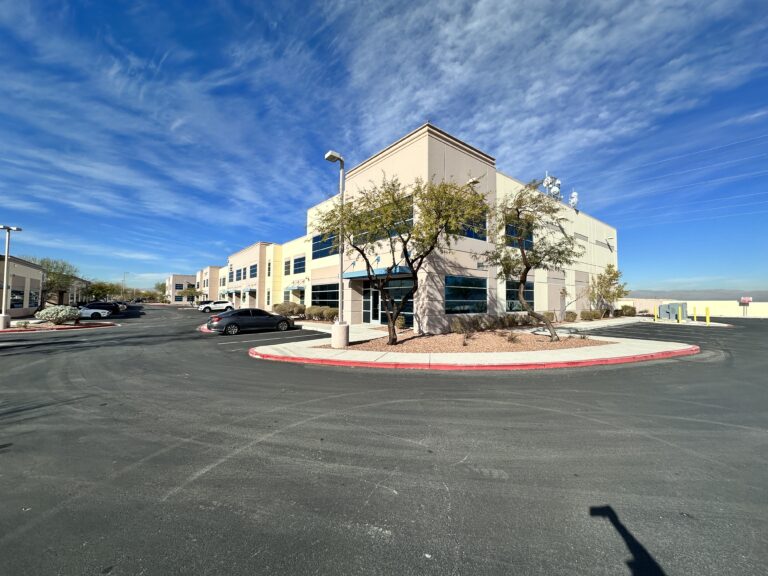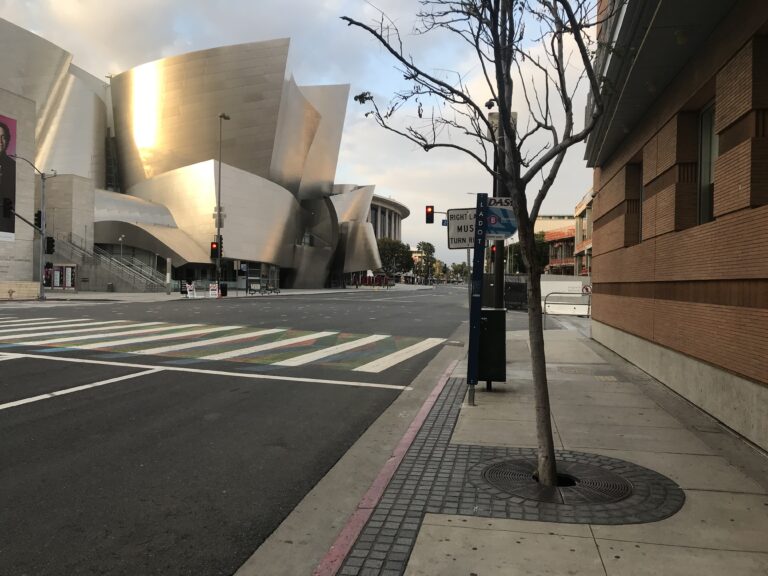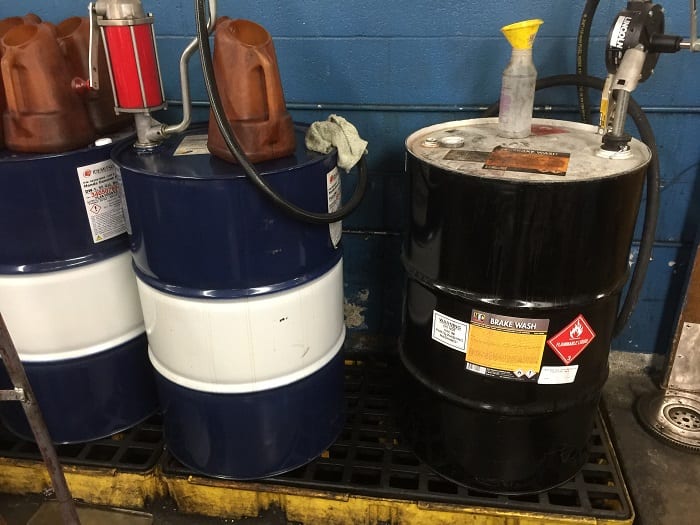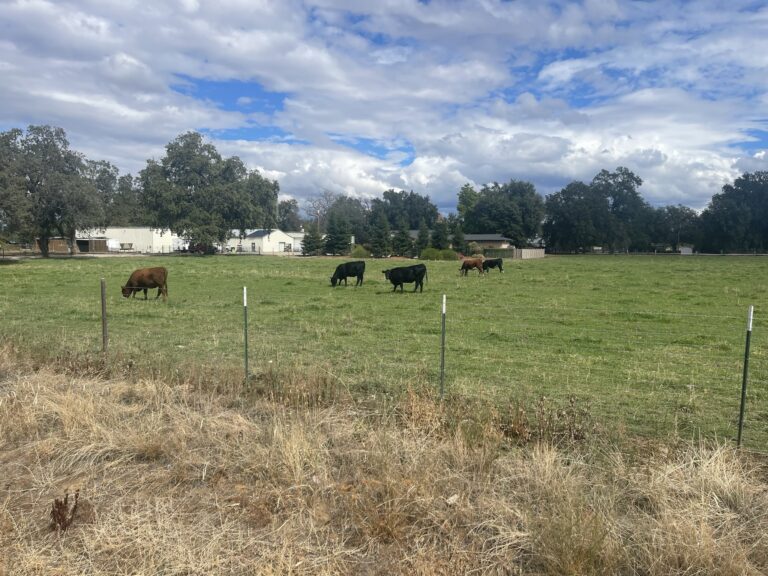Methane Barrier for Soil Vapor Membrane
A methane barrier is an impervious soil vapor membrane underlying building slabs and retaining walls. And it has the purpose of stopping subsurface methane soil gas from intruding inside structures. The overall goal is to protect the human occupants of buildings overlying methane soil gas pockets. For instance, petroleum fields, landfills, and any other type of contamination plume. The methane membrane is the key component of any methane mitigation system. Although sometimes, it dually serves the purpose of waterproofing and moisture penetration. The impervious membrane itself comprises special materials which do not permeate most volatile organic compounds (VOCs), or hydrocarbons. Updated April 9, 2024.
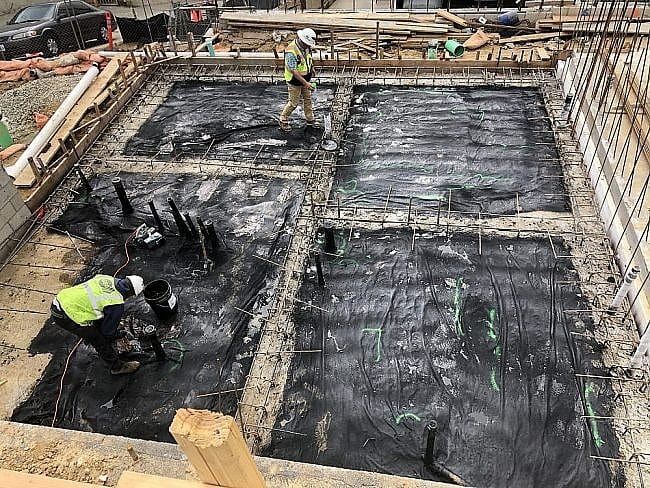
Geo Forward provides methane testing, methane mitigation design, and methane deputy inspection services. Geo Forward does NOT provide methane mitigation construction services. Geo Forward’s testing methods and mitigation designs are purely objective and are in general conformance with LADBS standards. No possible benefit or loss occurs from any result of a methane test report or mitigation plan design. For more information about the methane mitigation and vapor barrier construction process, please review Geo Foward’s post “What to Know About Methane Mitigation Construction.”
Why is a Vapor Barrier Necessary?
A methane barrier is typically necessary for areas where methane soil gas is apparent, due to historical oil fields or landfills. For instance, in Los Angeles Department of Public Works provides a map of methane zones and methane buffer zones. Properties within these zones usually require a methane mitigation system for buildings. Without a methane barrier, the dangerous gas builds up indoors, resulting in an explosion, asphyxiation, and health risks. Ultimately, the methane mitigation process serves to prevent the subsurface hydrocarbon gases from making their way indoors. The methane barrier itself is the key component of the system. In fact, it is the particular building material that blocks the methane gas. Whereas the remainder components are rerouted from the building space.
How Much Does a Methane Membrane Cost?
As of February 2021, the average methane barrier cost is at about $5 per square foot including labor and materials. However, the overall methane barrier price can vary. Pricing depends on the size, depth, and type of material. For instance, both labor and materials, cost less per square foot for large slab projects, compared to small basement jobs. Because the time and materials to install a vapor barrier at a small basement are greater than one large slab area, the price per square foot changes. The requirement for de-watering further increases the cost of basement-level projects compared to slab-on-grade.
Additionally, the vapor barrier material selection plays a strong role in the overall cost. To illustrate, some projects require a dual-purpose barrier, to serve as a waterproofing unit, as well as methane soil gas retardant. These types of materials tend to cost more and also require an extra level of care for sealing and installation. Naturally, the cost for this type of methane barrier will be double or triple in comparison to a simple sub-slab vapor barrier application.
Does Every Methane Mitigation System Need a Methane Soil Gas Barrier?
Consumers frequently ask whether all methane mitigation systems actually require a vapor barrier. The short answer is: not always, but usually, a barrier is necessary. There can be exemptions and substitutions to methane barrier materials. However, this depends on the local building code and the type of development. For instance, per the Los Angeles Methane Mitigation Standards, some small projects with low-level methane testing results can substitute the methane-impervious material with a thick sheet of Visqueen.
Sometimes, contractors might even know about this ability to substitute the barrier for less expensive materials but hide it from their clients for higher earning potential. Thus, to be certain, Geo Forward recommends that consumers check with their local building department, as well as their methane testing company for site-specific details.
When does Methane Membrane Construction Happen?
Methane mitigation construction is a crucial aspect of the land development process in methane hazard zones. There are multiple phases in which a mitigation system is built. The barrier itself usually starts after the pouring of the footing. But, it is also important that it occurs before the pouring of the final building slab. In order to pass all building department codes and inspections, an official deputy inspector who has absolutely no affiliation with the methane mitigation contractor must oversee the methane barrier installation process. Additionally, a leak test and thickness test must take place. This process must be overseen by the deputy inspector prior to the pouring of the final slab. In a nutshell, the pouring of the building slab starts after the impervious membrane is in place. But before the final approval of inspectors and confirmation of leak testing.
Upkeeping a Building with a Methane Barrier
Once a methane barrier is in place and the concrete slab is complete, there isn’t much concern for upkeeping. But any saw-cutting, trenching, coring, or excavation can cause a leak in the system. Thus, property owners and their contractors must always remember that the membrane exists underground. And if a new permeation is necessary due to additional construction down the line, experts must return to the site to properly seal it. As a result, new conduits or plumbing will not become a source of methane soil gas intrusion.


